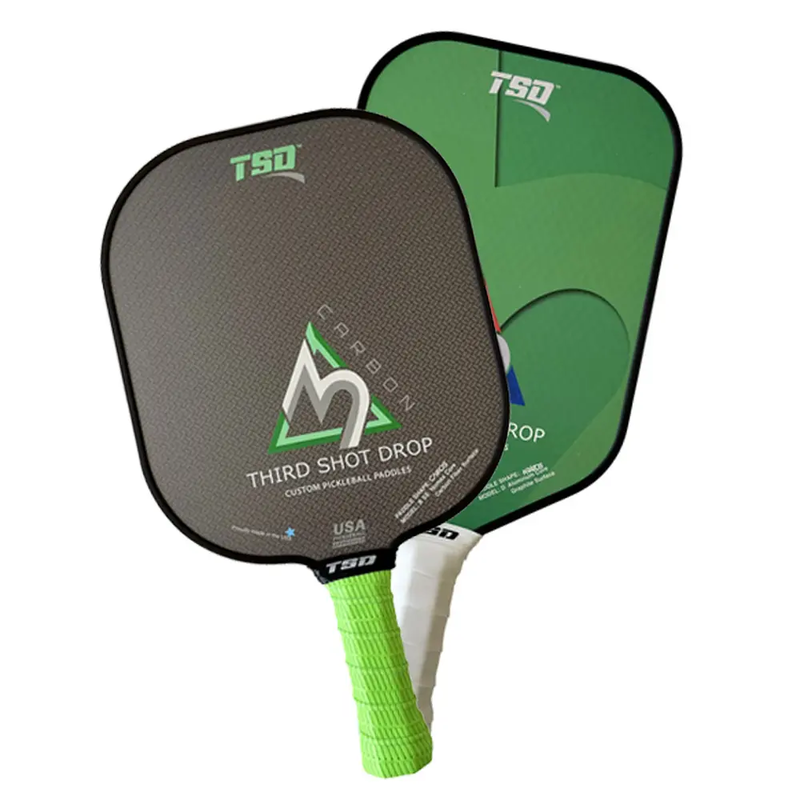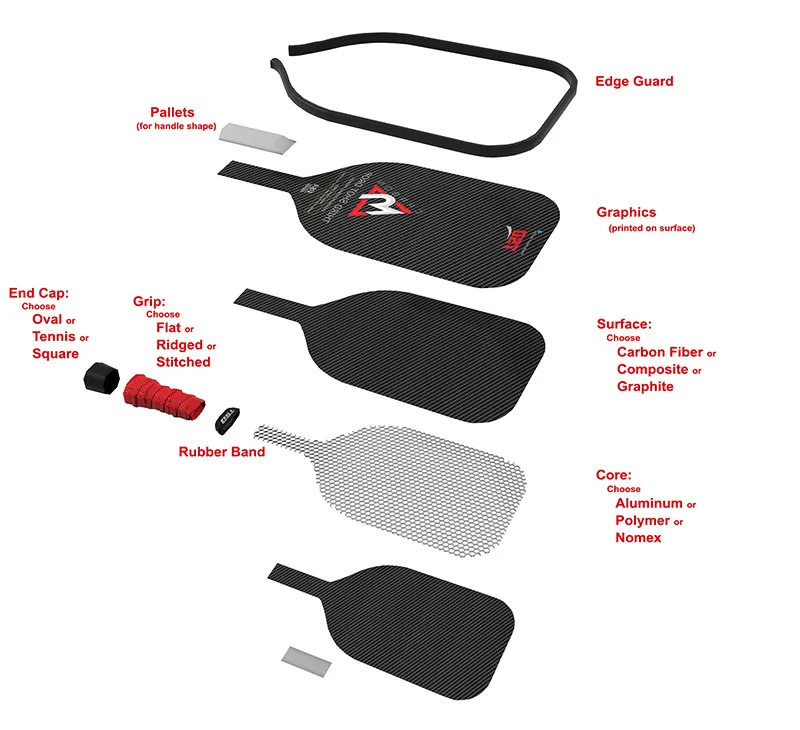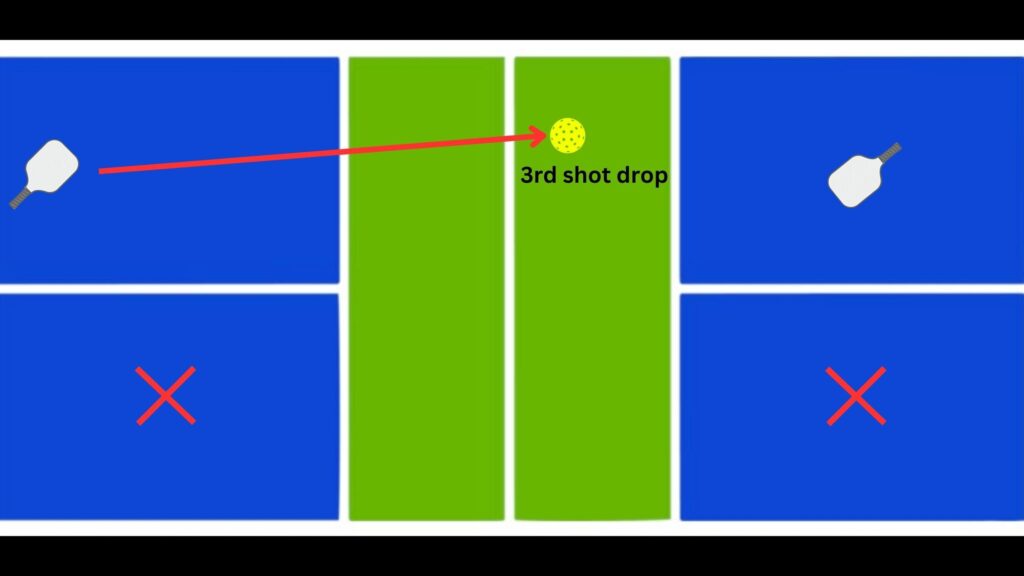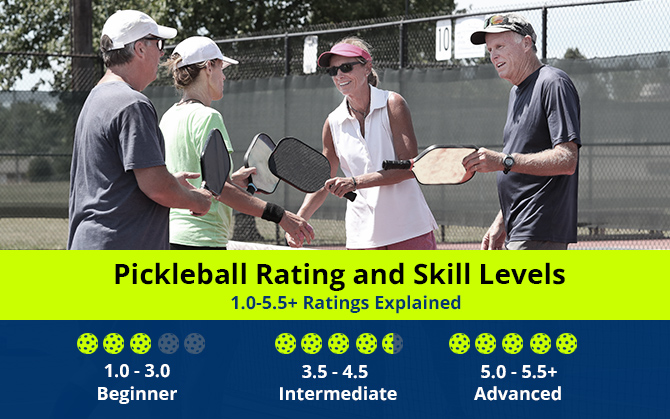To make pickleball paddles, choose a core material and a surface material to construct the paddle. These materials should be durable and lightweight for optimal performance.
Pickleball paddles are essential equipment for playing pickleball, a popular racket sport. When making your own paddles, it’s crucial to consider the materials you use to ensure the paddle’s quality and performance. By selecting the right core and surface materials, you can customize the paddles to suit your playing style and preferences.
In this guide, we will explore the process of making pickleball paddles, including the key materials required and step-by-step instructions to create your custom paddles. Whether you’re a beginner or a seasoned player, crafting your own pickleball paddles can enhance your gameplay experience and give you a sense of ownership over your equipment.

Credit: dylanbrenneis.ca
Selecting The Right Materials
The first step in making pickleball paddles is selecting the right materials. The materials you choose will determine the overall quality and performance of the paddle. From the type of wood used for the paddle face to the core material that gives it stability and structure, each component plays a vital role.
Choosing The Wood
The wood used for the paddle face is crucial for its durability and feel. It should be strong enough to withstand constant impact while providing a comfortable grip. One popular choice is Baltic birch wood, known for its strength and longevity. This type of wood is dense, making it ideal for pickleball paddle faces. Other popular options include maple and poplar, which offer a balance of strength and flexibility.
Selecting The Core Material
Next, it’s important to consider the core material of the paddle, which provides stability and control. The two main types of core materials are polymer and aluminum. Polymer cores are lightweight and offer a soft feel, making them ideal for players who prioritize control and touch. On the other hand, aluminum cores are heavier and provide a more powerful hit, making them suitable for players who prefer strength and stability.
Deciding On The Surface Material
The surface material of the pickleball paddle is the final piece of the puzzle. It affects the ball’s behavior upon impact and determines factors such as spin and control. Graphite is a popular choice for surface material due to its lightweight and excellent maneuverability. It offers a responsive feel and allows for enhanced ball control. Another option is fiberglass, which provides extra power and durability without compromising on control. Both graphite and fiberglass are widely used in professional pickleball paddles.
Remember, when selecting the right materials for your pickleball paddles, consider the playing style and preferences of the players who will be using them. Balance durability, feel, and performance to create a paddle that is both functional and enjoyable to play with.

Credit: www.thirdshotdrop.com
Creating The Paddle Shape
In pickleball paddle making, Creating the Paddle Shape is a crucial step. This determines the overall performance and feel of the paddle in play.
Designing The Paddle Dimensions
- Decide on the length, width, and thickness of the paddle based on personal preferences and playing style.
- Consider the regulations set by pickleball organizations to ensure the paddle meets standard dimensions.
- Use measuring tools carefully to achieve accuracy in the dimensions.
Cutting And Shaping The Paddle
- Begin by marking the paddle outline on the chosen material using a stencil or appropriate tool.
- Cut along the marked lines using a saw or cutting tool for precision in shaping the paddle.
- Smooth the edges and surfaces of the paddle to achieve a professional finish and enhance player comfort.
Assembling The Paddle
Assembling the pickleball paddle involves several key steps to ensure a functional and durable final product. From attaching the core to the surface to adding the edge guard and applying the grip, each stage is crucial in creating a paddle ready for the game.
Attaching The Core To The Surface
1. Secure the core material, typically made of polypropylene honeycomb, onto the paddle’s surface using high-strength adhesive.
2. Align the core centrally on the paddle face to ensure balanced weight distribution and optimal performance.
3. Press down firmly on the core to ensure a strong bond with the surface material, such as carbon fiber or fiberglass.
Adding The Edge Guard
1. Carefully measure and cut the edge guard material, often made of rubber or composite, to match the paddle’s dimensions.
2. Apply adhesive along the edges of the paddle and carefully press the edge guard into place, ensuring a snug and secure fit.
3. Smooth out any air bubbles or wrinkles in the edge guard to maintain a clean and professional finish.
Applying The Grip
1. Select a grip material that offers comfort and non-slip properties, such as cushioned perforated or tacky overgrip.
2. Start by wrapping the grip tape at the base of the handle, overlapping each layer slightly for a secure hold.
3. Finish by securing the end of the grip with adhesive tape or a finishing wrap to prevent unraveling during play.
Adding Personal Touches
When it comes to pickleball paddles, most people want more than just a standard design. They want a paddle that reflects their own style and personality. Adding personal touches to your pickleball paddle not only makes it unique, but it also helps you stand out on the court. In this article, we will explore some creative ways to customize your paddle and make it truly your own.
Customizing The Paddle Design
If you’re looking to add a personal touch to your pickleball paddle, consider customizing the design. There are various options available to make your paddle visually appealing and one-of-a-kind. Some popular ways to customize the design of your paddle include:
- Choosing a vibrant color scheme that reflects your personality.
- Adding patterns or textures using colored tape or decals.
- Using stencils and spray paint to create unique designs.
Customizing the design of your paddle allows you to express your creativity and make a statement on the pickleball court. It’s a great way to make your paddle stand out from the rest and leave a lasting impression on your opponents.
Incorporating Logos Or Artwork
If you have a logo or specific artwork that you want to showcase on your pickleball paddle, incorporating it can be a great way to add a personal touch. Whether it’s your team logo, a favorite sports team, or even your own artwork, there are a few ways you can incorporate it into your paddle:
- Engraving or etching the logo directly onto the paddle surface.
- Creating a custom decal or sticker with your logo and applying it to the paddle.
- Working with a professional artist to paint your logo or artwork directly onto the paddle.
Incorporating logos or artwork onto your pickleball paddle not only adds a personal touch but also creates a sense of pride and ownership. It’s a great way to showcase your passion and interests while playing the game you love.
Testing And Finishing
Testing and finishing are crucial stages in the process of making pickleball paddles. These stages ensure that the paddles meet the required quality and performance standards before they are made available for use by players. In this segment, we will explore the steps involved in ensuring the weight and balance of the paddles and the process of sanding and finishing the paddle.
Ensuring Weight And Balance
When crafting pickleball paddles, ensuring weight and balance is essential to maintain consistency across all paddles. Once the paddle’s core and face are assembled, it undergoes a meticulous weighing process to ensure it meets the desired weight specifications.
- Utilize a precise weighing scale to measure the paddle’s weight.
- Adjust the materials within the core to achieve the desired weight and balance.
- Conduct thorough quality checks to ensure the paddle meets the required standards.
Sanding And Finishing The Paddle
Sanding and finishing the paddle not only enhances its appearance but also plays a critical role in its performance on the court. This process involves the meticulous sanding of the paddle’s surface and the application of protective finishes to ensure its durability and performance integrity.
- Utilize high-quality sandpaper to smoothen the paddle’s surface.
- Apply a coating of protective finish to safeguard the paddle from wear and tear.
- Inspect the paddle for any imperfections and make necessary touch-ups to achieve a flawless finish.
Legal And Safety Considerations
To make and sell pickleball paddles, it is crucial to understand the legal regulations and ensure player safety. This section will delve into the specific legal requirements and safety measures needed for manufacturing and using pickleball paddles.
Understanding Legal Regulations
When manufacturing pickleball paddles, it’s essential to comply with the legal regulations regarding materials, dimensions, and marketing. The governing bodies set specific guidelines to ensure fair play and player safety, which manufacturers must adhere to. Failure to comply with these regulations can lead to legal consequences and jeopardize the safety of players and the reputation of the brand.
- Materials must meet the standards set by regulatory authorities to ensure the durability and safety of the paddles.
- Dimensions of the paddles should comply with the official size requirements to maintain fair gameplay.
- Marketing and labeling of the paddles must adhere to established regulations to provide accurate information to consumers.
Ensuring Player Safety
Player safety is paramount when it comes to pickleball. Meticulous attention must be paid to the construction and design of the paddles to prevent injuries and ensure a positive playing experience. Implementing safety measures throughout the manufacturing process and educating players about proper usage significantly contributes to injury prevention and enhances the overall satisfaction of the sport.
- Utilize durable and high-quality materials to construct paddles that can withstand rigorous gameplay while minimizing the risk of breakage or splintering.
- Provide clear instructions and warnings regarding the safe usage and maintenance of the paddles to prevent accidents and prolong their lifespan.
- Regularly inspect and test the paddles to identify any safety concerns and make necessary adjustments to guarantee optimal performance and player protection.
Maintaining And Repairing Paddles
Proper maintenance is crucial for extending the lifespan of your pickleball paddle and keeping it in optimal condition. Here are some simple yet effective tips to maintain your paddle:
- Keep it clean: After each game or practice session, wipe down your paddle with a damp cloth to remove any dirt, sweat, or moisture that may have accumulated. This will prevent the build-up of grime and ensure better performance.
- Protect the surface: Investing in a paddle cover or case is a smart move. It will shield the surface of your paddle from scratches, dings, and other damages when not in use or during transportation.
- Store it properly: Avoid leaving your paddle in extreme temperatures or direct sunlight, as this can cause warping or damage. Store it in a cool, dry place, ideally in a paddle bag or case, to maintain its shape and integrity.
- Check the grip: Regularly inspect the grip of your paddle. If it starts to show signs of wear and tear or becomes slippery, it’s time to replace it. A worn-out grip can affect your control and grip strength, impacting your game.
Even with proper maintenance, paddles can encounter damage over time. Knowing some common repair techniques can help you prolong the life of your paddle. Here are a few:
- Replacing the grip: As mentioned earlier, a worn-out grip can negatively affect your performance. To replace the grip, peel off the old one, clean the handle, and apply a new grip. This will ensure a secure and comfortable hold on the paddle.
- Filling dings and cracks: Small dings and cracks on the surface of your paddle can be filled in using epoxy resin. Follow the instructions on the product and carefully apply a small amount to the damaged area. Once it dries, sand it down for a smooth finish.
- Replacing edge guard: Over time, the edge guard of your paddle may wear out or crack. To replace it, gently remove the old guard, clean the edges, and attach a new guard using adhesive. This will protect the paddle from further damage.
By following these maintenance tips and utilizing common repair techniques when needed, you can ensure that your pickleball paddle remains in excellent shape, providing you with top-notch performance for many games to come.

Credit: dylanbrenneis.ca
Frequently Asked Questions Of How To Make Pickleball Paddles
What Materials Are Needed To Make Pickleball Paddles?
To make pickleball paddles, you’ll need a wooden core, fiberglass or carbon fiber face, edge guard, grip, and epoxy resin. Quality materials ensure durability and performance.
How Can I Customize My Pickleball Paddle?
Customizing your pickleball paddle can involve choosing different materials for the core, face, and grip, or adding personalized designs. A personalized paddle can enhance your playing experience and showcase your unique style.
What Is The Ideal Weight For A Pickleball Paddle?
The ideal weight for a pickleball paddle is typically between 7. 3 to 8. 4 ounces. Choosing the right weight is crucial for control and power in your gameplay. Consider your playing style and physical strength when selecting a paddle weight.
Conclusion
To craft your very own pickleball paddles, the process may seem daunting at first. However, with the right materials, tools, and techniques, it becomes an accessible and rewarding endeavor. By following the step-by-step guide outlined in this blog post, you can create customized paddles that suit your playing style perfectly.
Whether you are a beginner or an experienced player, making your own pickleball paddles adds a personal touch to your game. So, grab your supplies and get ready to ace your next match with your homemade creation!
Neil jacobson is an avid Pickleball enthusiast, writer, and coach dedicated to sharing the joy and intricacies of the sport. With 6 years of experience on the court and a passion for teaching, Courtney brings a unique perspective to his writing, offering practical insights and strategies for players of all levels. As a certified Pickleball coach, his mission is to inspire and empower individuals to excel in the game while fostering a sense of community within the Pickleball world. Through his articles, guides, and coaching sessions, Neil aims to elevate the playing experience and share the infectious enthusiasm that defines the Pickleball community.




